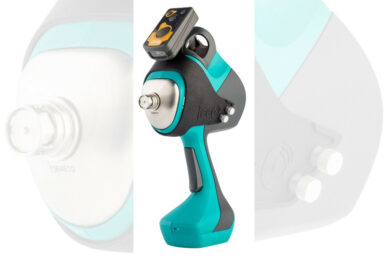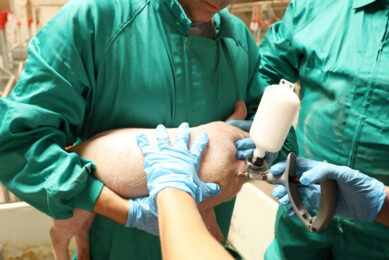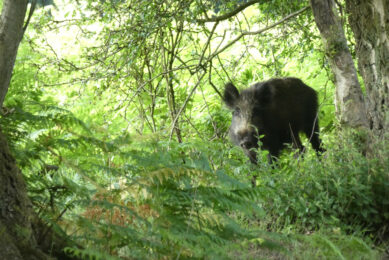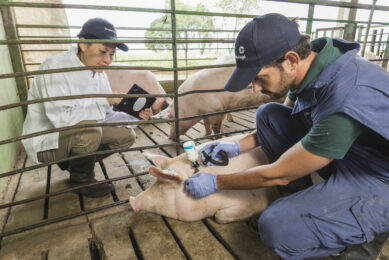Huvepharma wraps up successful Veterinary Symposium
On the second and last day of the International Veterinary Symposium, organised by Huvepharma the focus was on new insights in pig and poultry diseases and how to deal with the changing international agri markets – an area that concerns both farmers and veterinarians.
Prof. Dominiek Maes from Belgium started the pig workshop by giving a clear outline on the main respiratory diseases in swine and gave some facts that every veterinarian needs to know. Respiratory diseases are the most important diseases in pigs and are the major cause of antibiotic use on the farm, said Dominiek. However, studies showed that the prevalence of respiratory diseases have not gone down in the last 30 years, despite all the hygiene, health and management measures. Dominiek said that maybe the severity of the disease has gone down but that is difficult to say. He explained that M. hyo is caused mostly by trade of (subclinically) infected pigs and can be transmitted easily by air. Studies in the UK and Denmark showed that the pathogens can be transported by air for 3.2km and 4.7km respectively. He further addressed that M. hyo can be shredded for weeks or even months.©
©
Combined infections
Another important issue to consider is the interaction with other pathogens. When M. hyo and PRRS virus are present together, it was shown that M. hyo made the PRRS infection more severe and the symptoms in the animals were more severe than the sum of the two infections together. When M. hyo is present with influenza it was shown that the animals showed more severe coughing and the pneumonia lasted longer. Also M. hyo and PCV2 showed (negative) synergestic effects on the clinical symptoms of the disease, for example an higher incidence of PMWS disease. When M. hyo©was found with parasitic infections, also more severe pneumonia lesions were seen.
©
Dominiek mentioned that respiratory problems can be tackled via medication and/or vaccination. Medication gives the vet more flexibility and can be used against more pathogens. A negative aspect of vaccination is that it can only be used against one pathogen. However, vaccination is a more long term strategy compared to medication and creates no resistancy issues (which could be the case with applying medication). At the same time, Dominiek addressed that vaccination against respiratory disease is not enough to reduce the transmission and infection levels in the herd.©
©
C. perfringens in broilers
Dr. Anouk Lanckriet from Belgium talked about C. perfringens that poses a continuing challenge for the poultry industry. She explained that C. perfringens is a worldwide economic problem, causing acute Necrotic Enteritis that in turn causes a sudden increase of flock mortality (30-50%). However, C. perfringens strains differ in the type of toxins they produce and also the amount of toxins they shred. A study on broiler farms in Belgium showed that in the 63 isolated they got from these farms, all belonged to the toxinotype A: alpha toxin. Anouk said that besides this common alpha toxin, a new toxin was discovered©two years ago: the netB toxin. Studies with this toxin showed that deletion of the netB gene in virulant strain caused reduced virulance of the virus. However, netB negative strains were also found in Necrotic Enteritis positive birds.
©
Anouk also mentioned a survey that was done in the UK in 2001 where a strong correlation was found between the history of coccidiosis and the prevalence of Necrotic Enteritis. Another factor that has been shown to influence the presence of Necrotic Enteritis is the stocking density. A study showed that the disease was more present in birds that were kept at a stocking density of 30kg/m2 compared to chickens that were housed at 15kg/m2.©According to new©EU rules, stocking density can be maximum 33kg/m2, with an increase to 39 or 42kg/m2 if certain standards are met. Anouk said that this could create problems regarding Necrotic Enteritis if other measures are not put in place – such as alternatives to AGPs such as organic acids, essential oils or probiotics.©
©
An agri©market lecture
Osler Desouzart from Brazil gave a lively presentation about the current and future agri markets. World leadership in animal production©is open, but who will win? He said that their is enough food on the planet, but the way and what we consume is changing rapidly. He mentioned that if people earn more money (mostly in Asia), the consumption of animal protein goes up and they shift from eating vegetable protein to meat. He said that therefore the©future of the food industry is in de hands of the ones that don’t eat enough.
©
Osler named China as the big winner in terms of production of (pig) meat. However, China may come in trouble because it has not enough water to produce the increasing demand for meat, because the production of animal protein requires four times more water than the production of vegetable protein. Osler further addressed that it is important for future veterinarians to be educated about international agri markets, for the moment only at a few Veterinary Universities these type of education is part of the programme. This is mainly driven because the last 30 years the focus was on productivity, now the challenge lies in animal health.
©
Dose calculator for veterinarians
In his final comments of the symposium, Alain Kanora – Global marketing Director & International Sales Director Affiliates for Huvepharma – introduced the dose calculator©that can be used by pig and poultry vets. This tool – looks like a normal calculator – can be used to calculate the correct dose of medication for the animals inj mg/ kg body weight. It can be used for every medicated premix and veterinary drugs from all companies. Every veterinarian present at the symposium received such as calculator, and with the slogan “precision pays”, the organisation can look back on a very successful first symposium.©
©
About Huvepharma
Huvepharma www.huvepharma.com – with head offices in©Belgium and Bulgaria©is besides fermentation specialist producer of veterinary drugs (e.g. Pharmasin, Vetmulin and Tilmovet), anticoccidials, API’s©and feed additives. In 2005 Huvepharma acquired the feed additives business of Intervet. The company bought certain parts of Merial’s feed additives US in 2007.
©
[By Emmy Koeleman]











